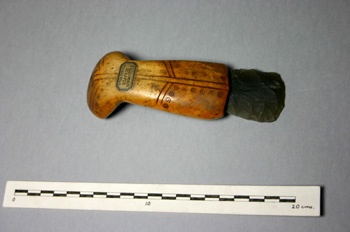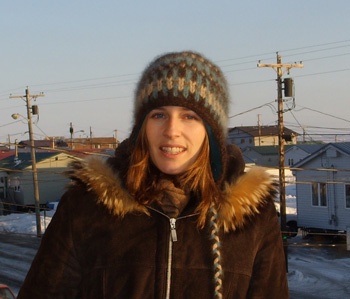An Aberdeen student has arranged for a group of native Alaskans to view some of the oldest ethnographic Iñupiaq Eskimo artefacts in the world.
Amber Lincoln, a PhD student at the University of Aberdeen, has helped co-ordinate a British Museum trip for representatives of the Iñupiaq of northwest Alaska. They will view collections dating back to trading between the Iñupiaq and British naval officers some 180 years ago.
The Iñupiaq people live in the broad coastal and tundra regions of Alaska north of Norton Sound in the Bering Sea region. They are the farthest north aboriginal people in the world.
The visitors will be hosted by the Pitt Rivers Museum in Oxford, where they will examine around 120 objects. The collections comprise tools and clothing, including walrus and whaling harpoons, caribou and seal skin footwear, and ivory bow-drills with engraved depictions of animals, hunting and dancing scenes, and other daily activities.
The aim of the trip is to identify the Iñupiaq source and processes for gathering materials, to highlight sewing and carving techniques, and to discuss how and when tools were made as well as their various uses.
The historic trip will be filmed for later distribution to Iñupiaq communities where few Alaskan Native people have seen the objects.
"Both the museums and the communities are better served when there is good communication and strong relationships built between the museums and the people the museums represent," added Amber. "These kind of exchanges offer potential for better understanding of ethnographic collections and more enriched educational programs."
The artefacts, collected during 1826 and 1827 by officers aboard the HMS Blossom, are part of a larger collection that originated primarily from Diomede and King Island, Norton and Kotzebue Sounds, Hotham Inlet, and the northeast tip along the Arctic coast between Point Hope and Point Barrow.
The visit is schedule to take place from January 21-24 and is being coordinated in collaboration with the Alaskan Native Village of Kotzebue, IRA.
Sponsors of the visit are the United States National Park Service's Shared Beringian Heritage Program, the Native Village of Kotzebue IRA, Kawerak, Inc., the Thaw Charitable Trust, Santa Fe, Bering Straits Native Foundation, the British Museum, and the Pitt Rivers Museum.




